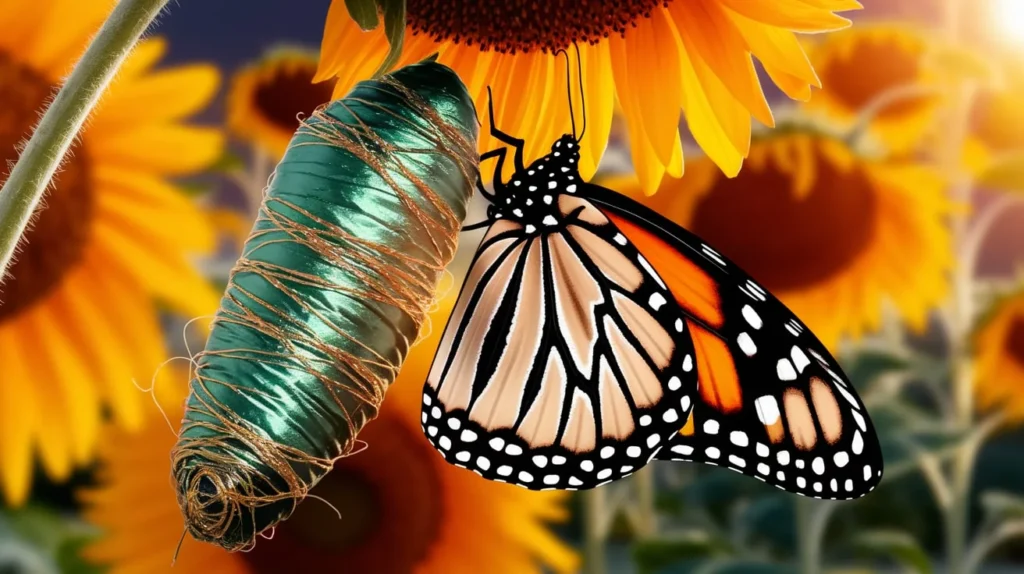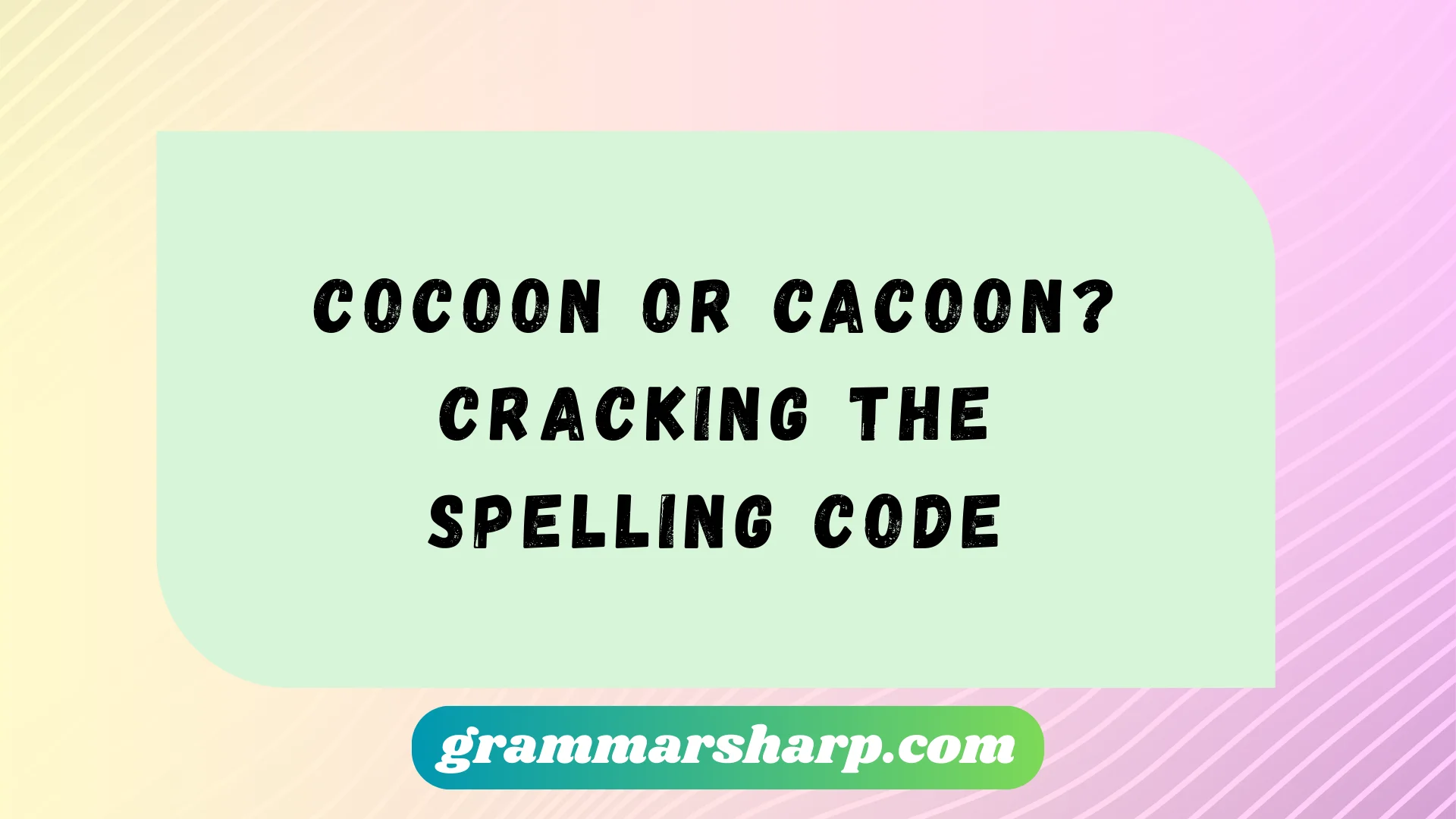Language often trips us up with small details. One of the most common spelling slip-ups you’ll come across is the mix-up between “cocoon” and “cacoon.” Both look convincing on the page, and when you say them out loud, they sound almost identical. That’s why so many writers, students, and even professionals hesitate before typing.
Here’s the truth: “cocoon” is correct. The spelling “cacoon” is a widespread but incorrect version. Still, this mistake is so frequent that it deserves a deep dive into why it happens, how to avoid it, and what makes “cocoon” such a fascinating and powerful word in both science and culture.
This article will walk you through the origin of the word, explain the spelling confusion, explore its use in everyday writing, and even share fun facts about cocoons in nature. By the end, you won’t just know how to spell it—you’ll have a richer appreciation for the word itself.
Let’s crack the spelling code once and for all.
What Does “Cocoon” Mean?
A cocoon is a protective casing spun by insects such as moths and butterflies during their larval stage. Inside, the creature transforms dramatically, emerging later as an adult. This natural process makes “cocoon” one of the most beautiful metaphors in the English language.
- Scientific meaning: A silk casing spun by insect larvae, mainly moths.
- Symbolic meaning: Protection, transformation, safety, or preparation for growth.
- Everyday language: People often say they are “cocooned in blankets” or living “in a cocoon of comfort.”
The richness of this word goes beyond science. It bridges the natural world with human imagination and everyday metaphors.
Why “Cocoon” is the Correct Spelling

The spelling cocoon has deep roots. It comes from the French word “cocoon” (meaning the silky case of an insect), which itself comes from the Latin word “coccum,” meaning a shell or berry.
This origin explains the double “o.” English adopted it without major changes, keeping its shape consistent through centuries of use. Dictionaries worldwide recognize cocoon as the only correct spelling.
Table: Quick Look at Etymology
| Language | Word Form | Meaning |
| Latin | coccum | Shell, berry |
| French | cocon | Silk casing of larvae |
| English | cocoon | Protective casing |
So when you ask “Cocoon or Cacoon?” the answer is simple: only cocoon carries the historical and linguistic legitimacy.
The Rise of the Misspelling “Cacoon”
If “cocoon” is correct, why do so many people write “cacoon”?
The reasons are surprisingly human:
- Phonetics: The “co” sound at the start can easily be mistaken for “ca.”
- Typing habits: People often type the way they hear, especially in informal settings.
- Regional accents: Some dialects blur vowel sounds, reinforcing the “ca” instead of “co.”
- Digital influence: Quick searches and auto-correct sometimes reinforce the wrong form.
Even Google search trends show thousands of people typing “cacoon” each month, proving how widespread the confusion is.
Cocoon vs. Cacoon: Common Contexts

The spelling difference shows up in very different contexts:
- Science and biology: Always “cocoon.” Textbooks, research papers, and academic journals use the correct spelling exclusively.
- Literature and poetry: Writers use “cocoon” metaphorically, describing safety, rebirth, or isolation.
- Casual online spaces: “Cacoon” often pops up in forums, chats, and social media.
Here’s a comparison:
| Context | Correct Usage | Incorrect Usage |
| Biology | “The moth emerged from its cocoon.” | “The moth emerged from its cacoon.” |
| Literature | “She wrapped herself in a cocoon of silence.” | “She wrapped herself in a cacoon of silence.” |
| Informal writing | Rarely misspelled | Often appears as “cacoon” |
Fun Facts About Cocoons in Nature
Cocoons aren’t just a spelling debate—they’re a biological marvel.
- Not all insects make cocoons: Butterflies form a chrysalis, not a cocoon.
- Silk moth cocoons: Used for thousands of years to produce natural silk.
- Golden cocoons: Some species make golden or shimmering cocoons.
- Protection: Cocoons shield larvae from predators, harsh weather, and bacteria.
- Size variations: They can range from tiny silk cases to large protective shells.
A cocoon is both a shield and a workshop of transformation, making it one of nature’s most powerful survival tools.
Everyday Idioms and Expressions with “Cocoon”
The word has spun its way into modern language and culture.
- “In a cocoon of comfort” → describing being safe and cozy.
- “Cocooning” → a lifestyle trend where people stay home for relaxation and protection.
- Business metaphors → leaders talk about “emerging from the cocoon” when launching new ideas.
- Media & movies → the 1985 film Cocoon used the word to symbolize rejuvenation.
This metaphorical power makes the correct spelling essential in both writing and conversation.
How to Remember the Correct Spelling
Confusing “cocoon” and “cacoon” is common, but a few tricks can help you remember the right one:
- Mnemonic: “Cocoon has two O’s, like two eyes peeking out from inside.”
- Shape memory: The double O’s look like the oval shape of a cocoon.
- Sentence trick: “Cocoon covers creatures; cacoon confuses.”
These simple strategies will lock the correct form into your memory.
Examples in Sentences
To see the difference, let’s look at real-world usage:
Correct usage (cocoon):
- The caterpillar spun a cocoon before turning into a moth.
- I love being cocooned in warm blankets on winter nights.
- Innovation often begins in a cocoon of ideas.
- The silkworm’s cocoon is harvested for textile production.
- She stayed in her cocoon of safety until she was ready to face the world.
Incorrect usage (cacoon):
- The caterpillar spun a cacoon.
- I was cacooned in warmth.
Whenever you see “cacoon,” it’s a red flag for a misspelling.
Common Questions About Cocoon vs. Cacoon
Is “cacoon” ever correct?
Dictionaries and grammar authorities only recognize cocoon.
Why do people use “cacoon” online?
Mostly due to phonetic spelling, typos, or lack of proofreading.
Do dictionaries include “cacoon”?
No major English dictionary lists “cacoon” as a valid word.
What’s the difference between cocoon and chrysalis?
A cocoon is spun by moths (a silk covering). A chrysalis is a hardened case formed by butterflies without external silk.
Can “cocoon” be used as a verb?
Yes. For example: She cocooned herself in a thick blanket.
Final Thoughts: Keep It Cocoon, Not Cacoon
Language thrives on clarity, and spelling is a big part of that clarity. The word “cocoon” carries centuries of linguistic history, scientific significance, and metaphorical depth. Its common misspelling, “cacoon,” might seem harmless, but it can undercut your credibility in professional or academic writing.
So here’s the rule of thumb:
- Use cocoon in science, writing, and everyday speech.
- Avoid cacoon entirely—it’s always incorrect.
As you think about this word, remember the beauty of what it represents. Just like an insect inside its cocoon, we all go through periods of growth and transformation. Getting the spelling right is a small step, but it connects you to a larger tradition of accuracy and expression.
In short: wrap yourself in knowledge, not confusion. Cocoon is correct.

